Laser
Laser surgery offers better hemostasis and
visibility, less post-operative swelling,
and decreased post-operative pain.
Contact Us
(08) 9296 6666 (office hours & after-hours emergency)
admin@belvoirequinehospital.com.au
Lot 158 West Swan Rd, Belhus, WA 6069
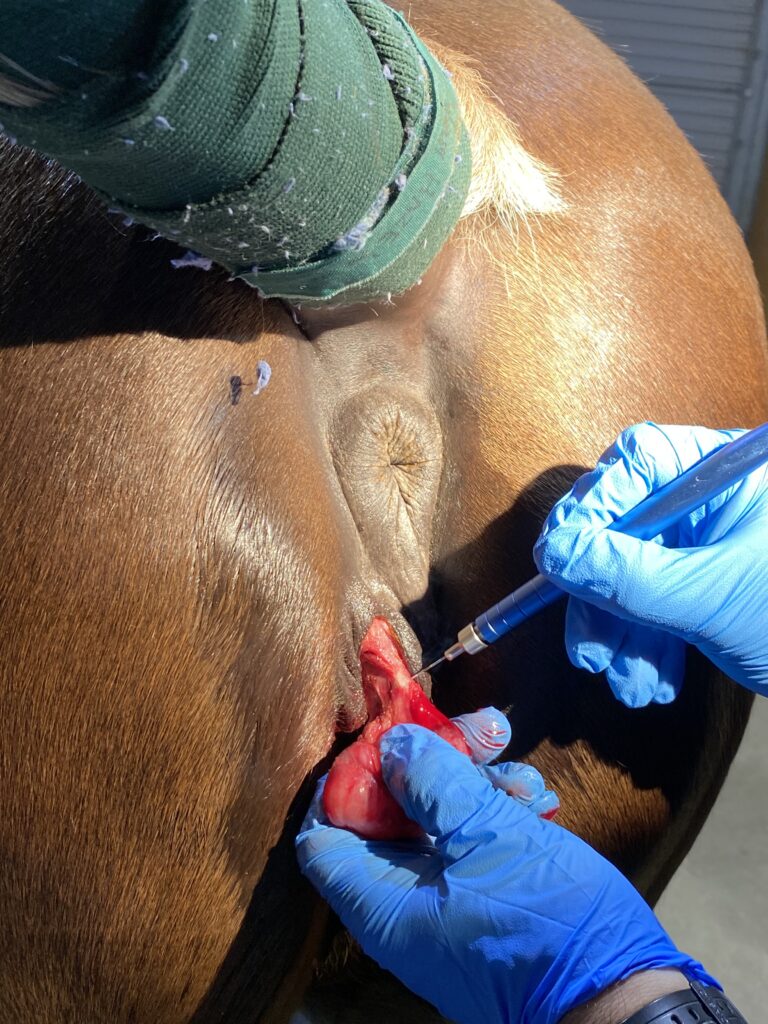
Surgical lasers have provided a significant improvement in the way in which we treat an age old problem – sarcoids and melanomas.
Sarcoids are the most common skin tumour affecting equines and are often difficult to treat due to their unpredictable nature, varying response to traditional therapies and tendency to recur.
Equally melanomas under the tail and between the legs are a frustratingly common occurrence in ageing grey horses.
A surgical laser is a specialised piece of equipment that can cut through skin and other soft tissues, just like a normal surgical blade, but since the emitted energy also results in heat, small blood vessels are sealed immediately. The laser therefore cuts and vaporises tissue, with minimal bleeding.
This is particularly useful when operating on skin tumours, where there is an increased risk of spreading the tumour via the blood or lymphatic system. As the laser vaporises the cells it cuts, any potential cancerous cells are also killed, thereby reducing the chance of tumour cells contaminating the surrounding healthy tissues. Once the growth is removed the underlying area can be crosshatched with the laser to vaporise any remaining cancerous cells.
The laser has distinct advantages over other treatment methods such as the application of creams as these often have to be reapplied on numerous occasions. Laser therapy however removes the offending tissue in one session. It also has the benefits of rapid healing times, good cosmetic results, minimal complications and most importantly good success rates with a low recurrence rate. Despite all its advantages some sarcoids, depending on the type and position, are still best treated by more traditional methods or a combination of the laser with other options.
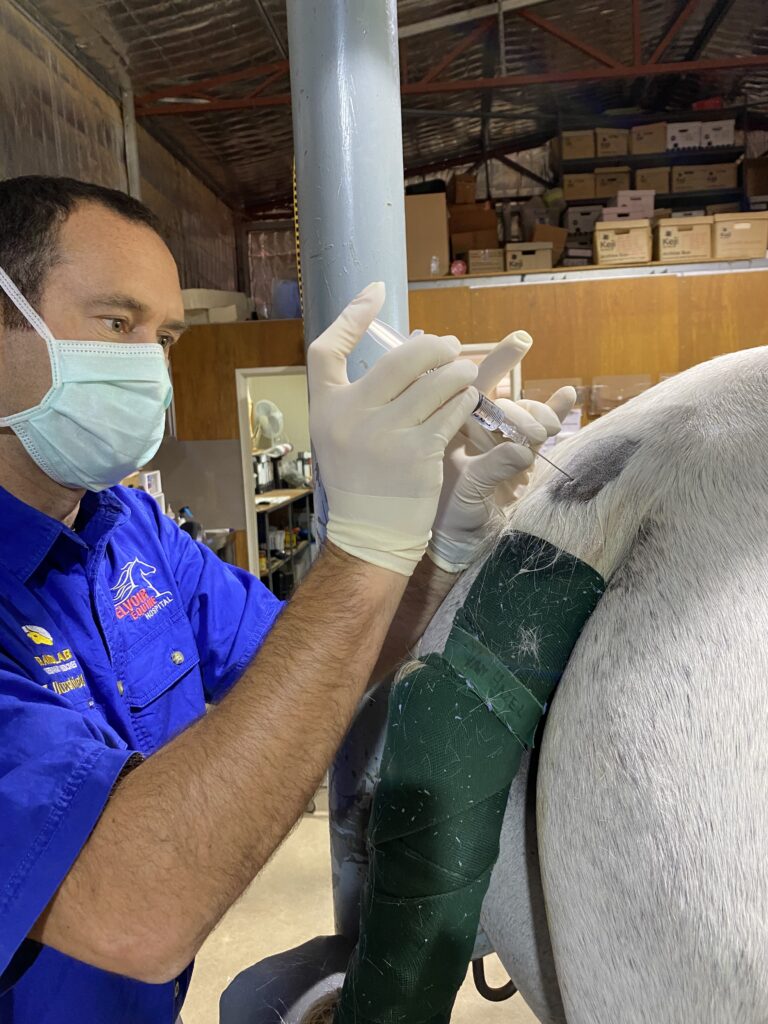
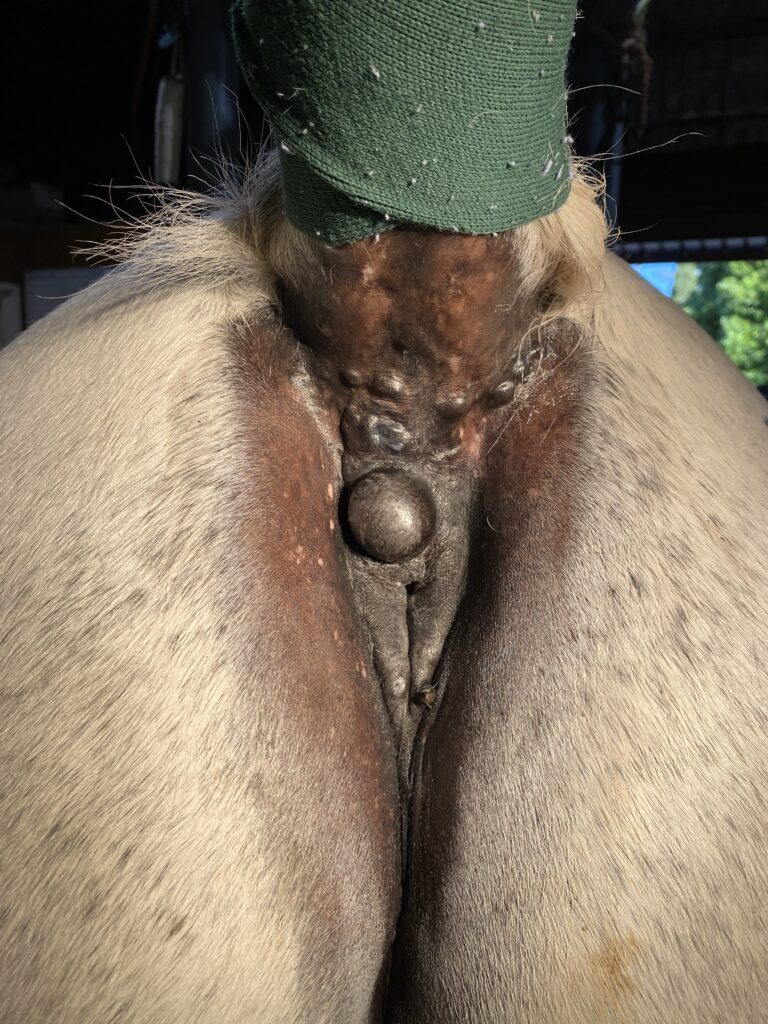
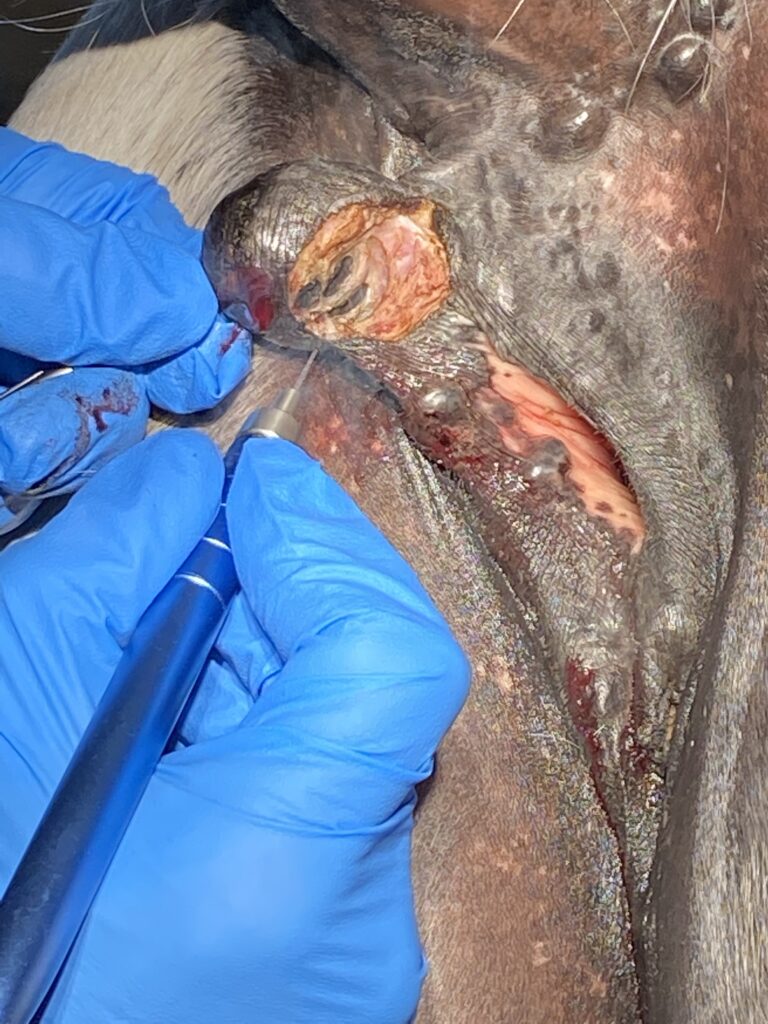
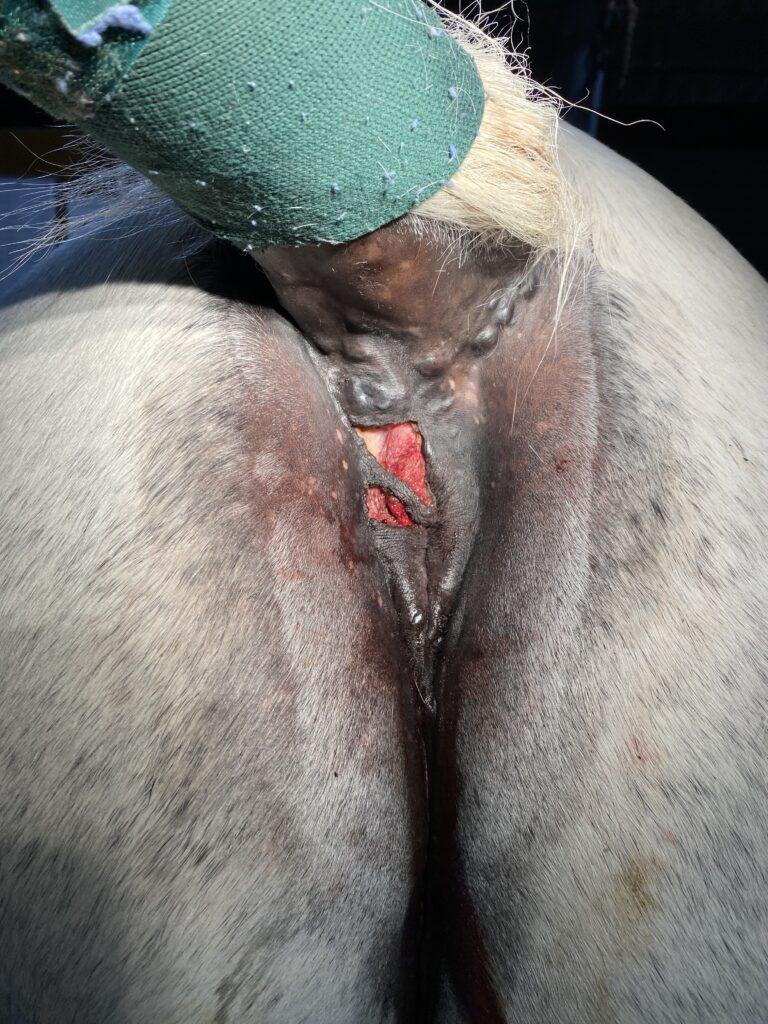
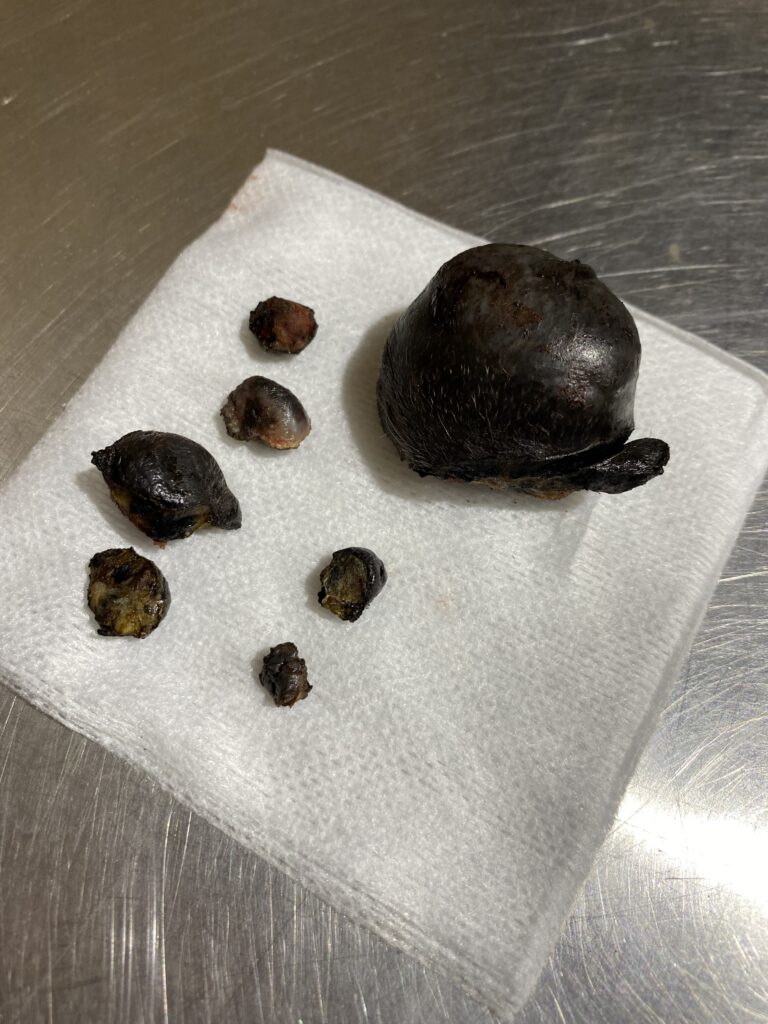
A general anaesthetic is sometimes required for the laser removal of sarcoids and other skin tumours but many other cases can be treated understanding sedation with the area desensitised by local anaesthetic only.
Early intervention when the offending lesions are small provides the best rates of success combined with low recurrence rates.
The application of surgical laser is not limited to just the skin. There are applications for use in upper airway interventions such as palate and pharyngeal surgeries facilitated by endoscopy, ophthalmology, reproductive medicine for ablation of endometrial cysts, as well as musculoskeletal issues.
